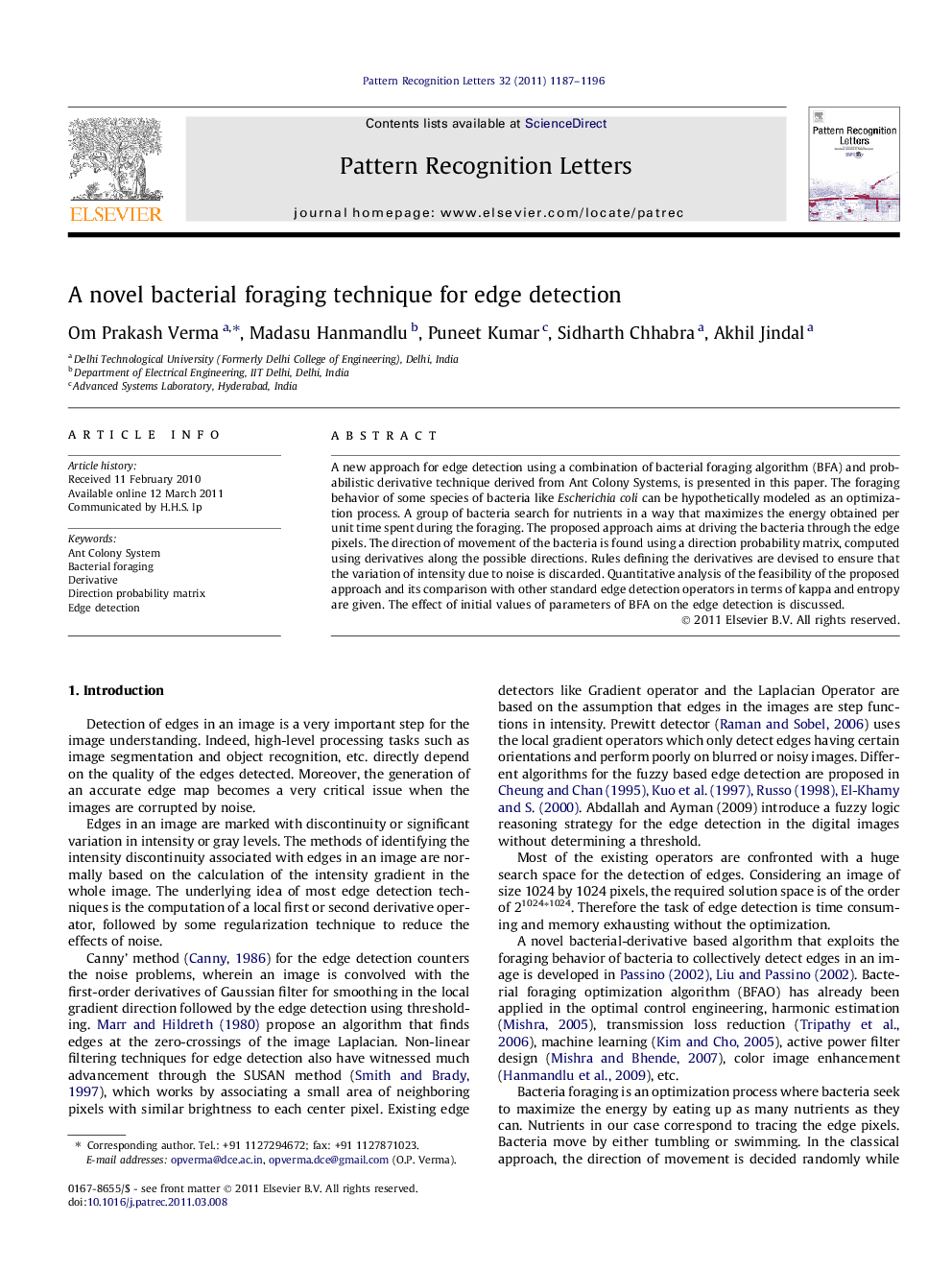| Article ID | Journal | Published Year | Pages | File Type |
|---|---|---|---|---|
| 536016 | Pattern Recognition Letters | 2011 | 10 Pages |
A new approach for edge detection using a combination of bacterial foraging algorithm (BFA) and probabilistic derivative technique derived from Ant Colony Systems, is presented in this paper. The foraging behavior of some species of bacteria like Escherichia coli can be hypothetically modeled as an optimization process. A group of bacteria search for nutrients in a way that maximizes the energy obtained per unit time spent during the foraging. The proposed approach aims at driving the bacteria through the edge pixels. The direction of movement of the bacteria is found using a direction probability matrix, computed using derivatives along the possible directions. Rules defining the derivatives are devised to ensure that the variation of intensity due to noise is discarded. Quantitative analysis of the feasibility of the proposed approach and its comparison with other standard edge detection operators in terms of kappa and entropy are given. The effect of initial values of parameters of BFA on the edge detection is discussed.
► Bacterial foraging algorithm is used to find the edge pixels in an image. ► Problem of differentiation between a noisy pixel and an edge pixel is addressed. ► Direction probability matrix is used to find the direction of movement of bacteria. ► Improved results are quantitatively verified using kappa and entropy values. ► The effects of initial values of the parameters used in BFA are also discussed.
